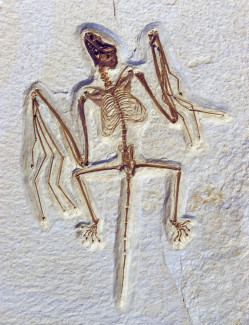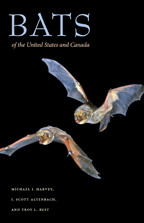
Johns Hopkins UniversityEst. 1876
America’s First Research University
Wild Thing: A little something about bats
Wild Thing is an occasional series where JHU Press authors write about the flora and fauna of the natural world—from the rarest flower to the most magnificent beast.
Guest post by Michael J. Harvey, J. Scott Altenbach, and Troy L. Best

In fact, bats are not even rodents. They belong to the mammalian order Chiroptera, which means "hand wing." The bones present in a bat's wing are the same as those of the human arm and hand, but finger bones of bats are greatly elongated and connected by a double membrane of skin to form the wing.
Food habits of bats vary greatly. Almost all bats in the United States and Canada feed exclusively on insects and other small invertebrates, and thus are extremely beneficial. Insect-eating bats may consume more than half their body weight in insects each night. A few desert southwestern species also feed on nectar and pollen. Bats drink by skimming close to the surface of a body of water and using their tongues to gulp a mouthful.

Large colonies of insect-eating bats that roost in caves produce enormous quantities of guano (fecal droppings). Guano is an excellent fertilizer and many caves have been mined for this valuable material. Reportedly, more than 100,000 tons (200 million pounds) was mined from Carlsbad Caverns in New Mexico during the early 1900s. Caves usually referred to as "peter" caves also played a part in Civil War history. The Confederate Army mined nitrogen-rich earth and guano from several caves in the southeastern United States to produce saltpeter (potassium nitrate) for use in manufacturing gunpowder.
Most bats give birth to only one or two babies annually; a few have three or four babies at a time. Females nurse them from mammary glands. The babies mature rapidly and most are able to fly in less than a month. A baby bat may weigh as much as one-third its mother's weight when it is born. Small bats live relatively long lives for animals of their size, some over 30 years.
Many populations of bats worldwide are decreasing rapidly, most as a direct result of human activities such as habitat destruction, use of pesticides and other chemical toxicants, disturbance to hibernating and maternity colonies, and vandalism. Some are harvested as food for humans. Bats are an extremely interesting and beneficial segment of our fauna. They should be understood and appreciated, not feared and persecuted.
Click here to see more images from the book.



